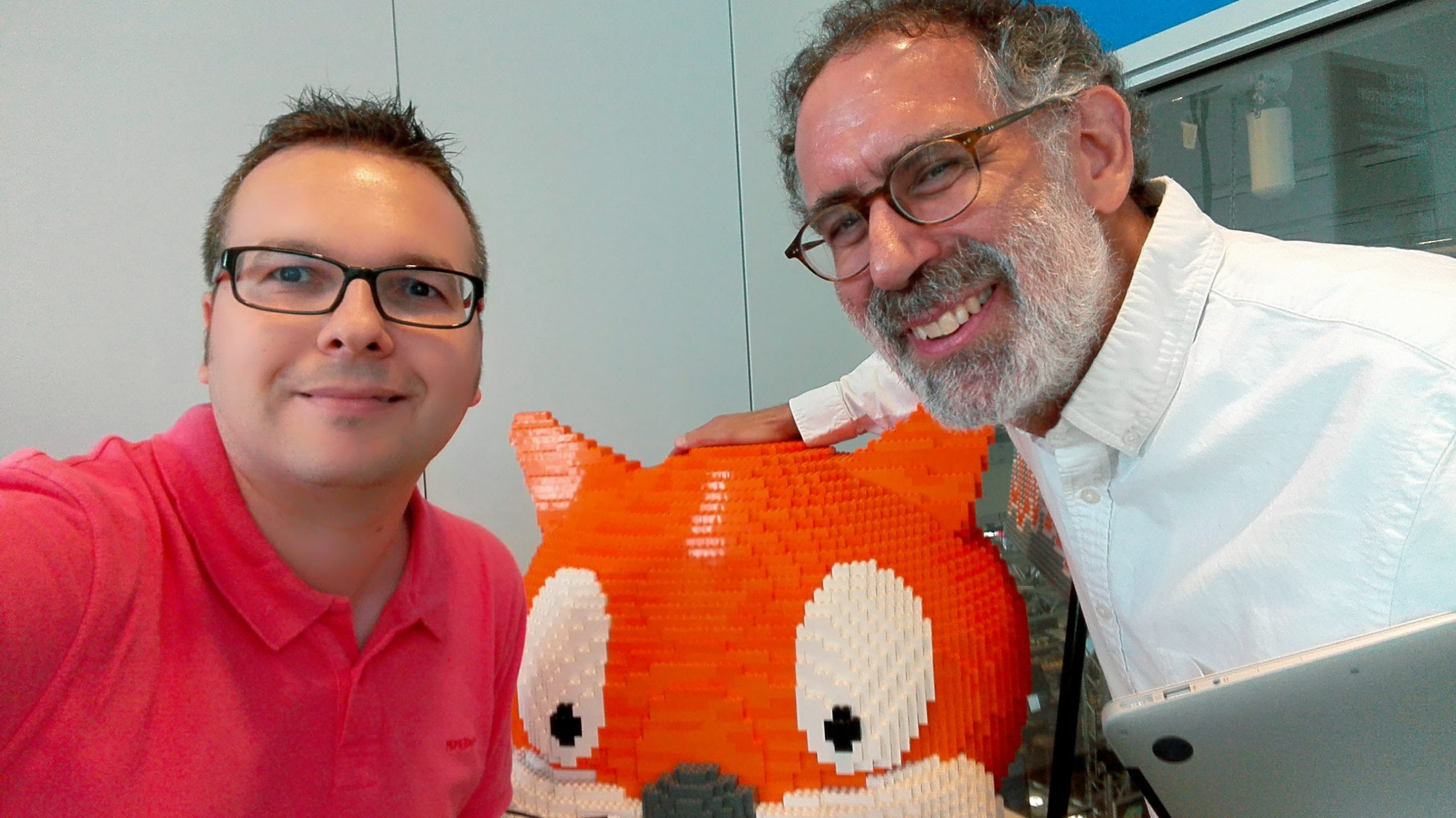Most children know Scratch today, an educational tool created by the MIT Media Lab to teach coding to kids. Codelearn’s team has visited the Massachusetts Institute of Technology (MIT) and has had the opportunity to interview Mitchel Resnick (Scratch’s creator) and Carmelo Presicce (Researcher). We would like to thank them both for the time we spent together and the visit to the MIT Media Lab, where Scratch was created.
Scratch is a programming language and an online community which makes easy to create your own interactive stories, games and animations –as well as sharing them online. As children create and share Scratch projects, they learn to think creatively, think systematically and work collaboratively while learning mathematical and computational ideas.
Who’s behind Scratch?
The MIT’s Kindergarten Lifelong research group (Cambridge, US). This research group develops new technologies and activities –by using blocks and visual arts– that involve people in creative learning experiences. Its main goal is to make the world a better place with lots of creative people able to create new possibilities for their communities.
Celebrating 10 years of Scratch!
Since the launch of Scratch in 2007, children and teenagers around the world have coded and shared more than 15 million Scratch projects. The first generation of Scratch was an app that kids had to download to local machines. With Scratch 2.0, the second and current generation of Scratch, kids can create and share their interactive stories, games and animations in web browsers.
Scratch is committed to Computational Thinking… What is that?
As children play with physical world materials, they constantly alter “things” by merging and creating new ones. If we add the digital world, a game approach and the power of using new technologies, this combination grows exponentially: trying new ideas, exploring alternative paths, making adjustments, imagining new possibilities, expressing yourself in a creative way. They learn though a creative process and therefore they grow as creative thinkers.
This doesn’t mean that everything is easy. As digital technologies enter children’s lives, there’s the risk that children fall into spending more time watching screens than experiencing by using them. This is one of our work’s main challenges, to see how digital technologies can be used to open new game opportunities and reduce this real growing risk.
What are you working on nowadays?
Scratch 3.0 is the next generation of Scratch which looks further into this possibility of empowering children to create with technology on their mobile devices. In addition, Scratch 3.0 places special emphasis on creating with a wide variety of media –including sound, data and even the physical world integrating with IoT and digitized building kits.
Scratch and the Codelearn method
Students who follow the Codelearn method use Scratch after working and putting into practice previous theoretical concepts through our online platform. This language allows to work using different methodologies in order to address longer educational programs and give them a project-oriented approach. In short, it allows our children to quickly develop complex and spectacular programs they can share and teach to their peers, all this while giving them tools to develop their own projects.

